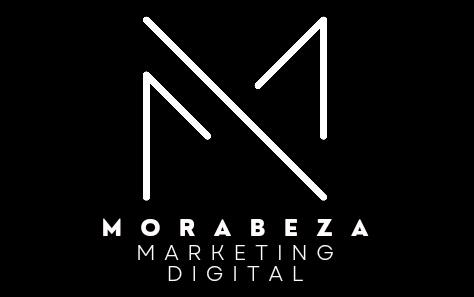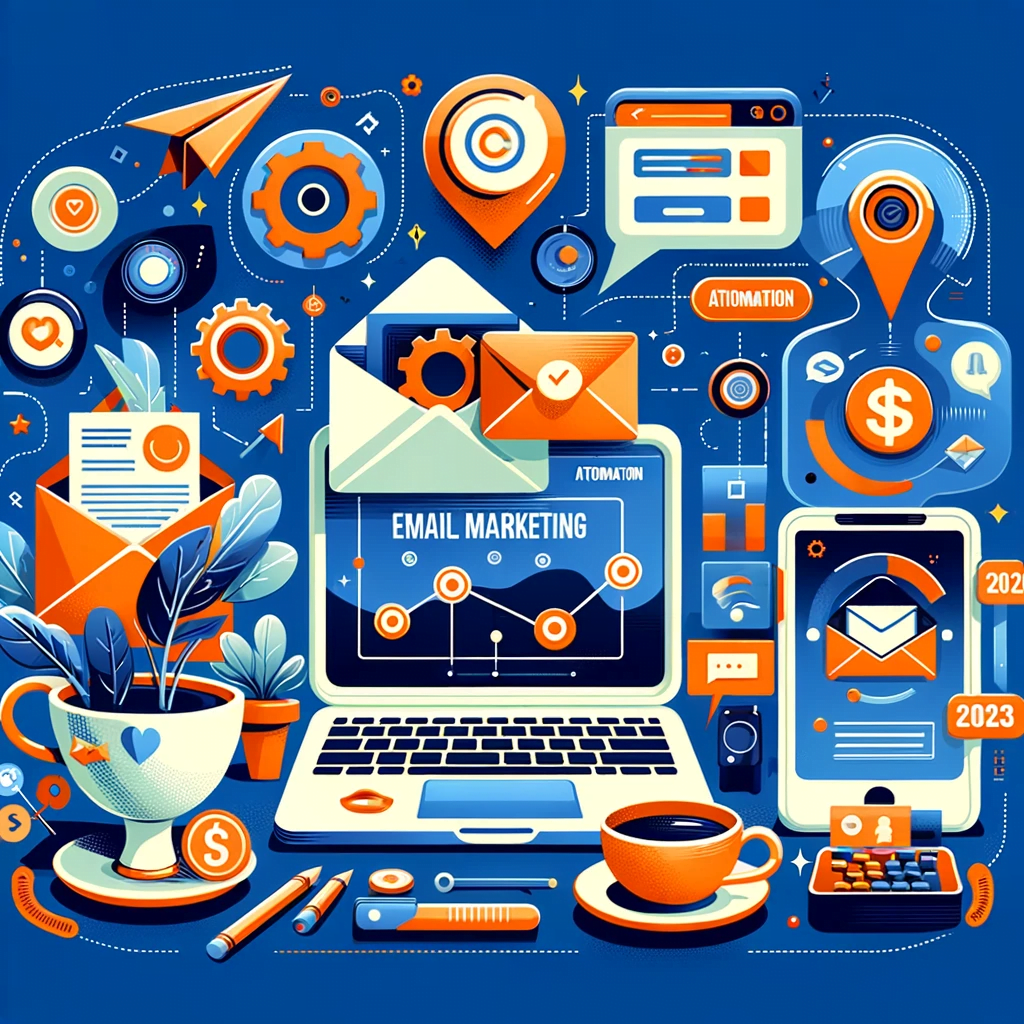


Como empreendedor ou profissional de marketing atento, você provavelmente está se perguntando: o que posso fazer para diferenciar minha marca de uma longa lista de concorrentes acirrados? A resposta curta é: branding!
Contents
Email marketing é uma estratégia de marketing digital que consiste em enviar mensagens comerciais por meio do email para um grupo de pessoas ou clientes em potencial. Essa ferramenta tem se mostrado extremamente importante para as empresas, pois oferece uma comunicação direta e personalizada com o público-alvo.
O email marketing é uma maneira eficaz de alcançar os clientes de forma direta e, ao mesmo tempo, economizar recursos financeiros. É uma forma de se manter na mente dos clientes, enviar atualizações, lançar promoções e até mesmo mostrar seu expertise em determinado assunto.
As tendências de email marketing estão evoluindo constantemente para acompanhar as mudanças nas preferências e comportamentos dos consumidores. Algumas das principais tendências que podemos esperar para 2024 incluem:
Como você pode ver, o email marketing continua sendo uma ferramenta poderosa para as empresas se conectarem com seu público-alvo. Ao acompanhar as tendências e adaptar suas estratégias, sua marca estará à frente da concorrência e poderá alcançar ainda mais sucesso.
Uma das principais tendências do email marketing para 2024 é a personalização e segmentação de campanhas de email. Os consumidores estão cada vez mais exigentes e desejam receber conteúdo que seja relevante e personalizado para suas necessidades e interesses.
As empresas estão investindo em tecnologias avançadas que permitem segmentar suas listas de email com base em diferentes critérios, como idade, localização geográfica, histórico de compras e comportamento de navegação. Isso permite que as empresas enviem mensagens altamente direcionadas e relevantes para cada segmento de público, aumentando assim as chances de engajamento e conversão.
Outra tendência importante do email marketing para 2024 é a automação. Com o avanço da inteligência artificial e do machine learning, as empresas estão utilizando ferramentas de automação para enviar emails com base no comportamento do usuário.
Essa automação inteligente permite que as empresas personalizem ainda mais suas campanhas de email, enviando mensagens específicas para cada estágio do funil de vendas e para cada interação do usuário com o conteúdo. Isso garante uma experiência mais individualizada para cada cliente, aumentando as chances de conversão e fidelização.
Além disso, a automação de email marketing também ajuda as empresas a economizarem tempo e recursos, pois permite o envio automático de mensagens de boas-vindas, lembretes de carrinho abandonado, emails de follow-up e muito mais.
Ao adotar essas tendências de personalização e automação de email marketing em sua estratégia, sua marca estará se destacando da concorrência e proporcionando aos clientes uma experiência única e relevante, o que certamente trará resultados positivos para o seu negócio. Fique atento a essas tendências e aproveite ao máximo o poder do email marketing.
O email interativo é uma das principais tendências do email marketing para 2024. Ele envolve o uso de recursos interativos, como botões, menus suspensos e carrosséis, para criar uma experiência mais engajadora e personalizada para os destinatários. Ao contrário dos emails tradicionais, o email interativo permite que os usuários interajam diretamente com o conteúdo, tornando a comunicação mais dinâmica e eficaz.
As vantagens do email interativo são diversas. Em primeiro lugar, ele aumenta significativamente o envolvimento dos usuários. Ao fornecer opções de interação, como a possibilidade de responder a uma pesquisa ou clicar em um menu para obter mais informações, os destinatários se sentem mais envolvidos e propensos a interagir com o email.
Além disso, o email interativo oferece uma oportunidade única de coletar dados e insights sobre os usuários. Por meio do acompanhamento das interações, é possível obter informações valiosas sobre as preferências e comportamentos dos destinatários, o que pode orientar futuras campanhas de email e personalização.
Outra vantagem do email interativo é sua capacidade de aumentar as taxas de conversão. Ao tornar o conteúdo mais relevante e direcionado, é mais provável que os destinatários realizem ações específicas, como fazer uma compra ou preencher um formulário.
Para se inspirar na criação de emails interativos, aqui estão alguns exemplos:
Ao utilizar essas tendências de email interativo em suas campanhas de email marketing, sua marca poderá oferecer uma experiência mais envolvente e personalizada aos clientes, aumentando o envolvimento e as chances de conversão. Fique atento a essas tendências e explore o potencial do email interativo para impulsionar o sucesso de sua estratégia de marketing.

Com o crescente uso de smartphones e tablets, é essencial que as marcas otimizem seus emails para dispositivos móveis. O acesso à internet por meio desses dispositivos é cada vez mais comum, e os usuários esperam ter uma experiência fluida e fácil ao abrir seus emails. Quando um email não é otimizado para dispositivos móveis, pode ser difícil de ler e navegar, o que resulta em uma experiência negativa para o usuário e, possivelmente, na perda de oportunidades de engajamento e conversão.
Existem várias razões pelas quais otimizar emails para dispositivos móveis é importante. Primeiro, considerando que a maioria das pessoas verifica seus emails em seus smartphones, é fundamental garantir que o conteúdo seja adaptado para telas menores. Isso significa utilizar uma fonte legível, espaçamento adequado e imagens responsivas que se ajustem ao tamanho da tela.
Além disso, emails mobile-friendly podem melhorar a experiência do usuário, facilitando a navegação e a interação com o conteúdo. Botões grandes e de fácil clique, layouts simples e claros e formulários fáceis de preencher são alguns elementos que podem tornar os emails mais amigáveis para dispositivos móveis.
Outra razão para otimizar os emails é que isso pode impactar positivamente as taxas de abertura e de cliques. Se um usuário abrir um email em seu dispositivo móvel e a experiência for frustrante, é provável que ele feche o email sem interagir com o conteúdo. Por outro lado, ao entregar uma experiência mobile-friendly, você aumenta as chances de que o usuário leia o email por completo e clique nos links relevantes.
Para criar emails mobile-friendly, aqui vão algumas dicas:
Ao seguir essas dicas, você estará criando emails otimizados para dispositivos móveis que proporcionam uma experiência agradável para os usuários e aumentam as chances de engajamento e conversão.
Em um mundo digital cada vez mais saturado de informações, a personalização de emails se tornou uma estratégia essencial para as marcas se destacarem e conquistarem a atenção dos consumidores. A relevância da personalização de emails está na capacidade de oferecer conteúdo relevante e personalizado para cada destinatário, tornando as mensagens mais impactantes e aumentando as chances de engajamento e conversão.
Ao personalizar os emails, as marcas podem criar uma conexão mais profunda com os clientes, mostrando que realmente conhecem suas necessidades e desejos. Isso pode ser feito através da segmentação da base de contatos com base em dados demográficos, comportamentais ou histórico de compras. Ao enviar mensagens direcionadas e específicas para cada segmento, as marcas conseguem entregar um conteúdo mais relevante e aumentar a probabilidade de conversões.
Existem várias técnicas que as marcas podem utilizar para personalizar suas campanhas de email. Algumas delas incluem:
Ao utilizar essas técnicas e investir na personalização de emails, as marcas podem aumentar a eficácia de suas campanhas, fortalecer o relacionamento com os clientes e impulsionar os resultados de marketing. A personalização de emails é uma tendência que continuará a crescer nos próximos anos, à medida que as marcas buscam se conectar de forma mais genuína e significativa com seu público-alvo. É fundamental para as empresas acompanharem essas tendências e se adaptarem às demandas dos consumidores para se manterem competitivas no mercado de email marketing.
No mundo do marketing digital em constante evolução, o comportamento do usuário desempenha um papel crucial nas campanhas de email. Ao entender como os destinatários interagem com as mensagens, as marcas podem personalizar suas abordagens e aumentar a eficácia das campanhas. O comportamento do usuário pode fornecer insights valiosos sobre preferências, interesses e intenções, permitindo que as marcas entreguem conteúdo relevante e oportuno.
Ao rastrear métricas como taxas de abertura, cliques e conversões, as empresas podem obter informações sobre quais tipos de conteúdo e ofertas são mais atraentes para seus públicos-alvo. Esses dados podem ser usados para criar jornadas de email mais direcionadas, segmentando os destinatários com base em seu comportamento anterior. Por exemplo, um usuário que abriu e clicou em um email promocional pode receber uma sequência de acompanhamento com ofertas relacionadas, enquanto um usuário inativo pode ser reengajado com um conteúdo personalizado.
Existem várias estratégias eficazes para criar campanhas de email baseadas no comportamento do usuário. Aqui estão algumas sugestões:
A personalização de emails com base no comportamento do usuário é uma tendência em crescimento no marketing digital. Ao utilizar estratégias eficazes e analisar os dados de comportamento, as marcas podem melhorar a relevância, o engajamento e os resultados das suas campanhas de email. É fundamental acompanhar as tendências e adaptar as estratégias para atender às demandas em constante mudança dos consumidores.
No mundo digital de hoje, a autenticidade e a segurança dos emails são fundamentais para proteger as marcas e os usuários de fraudes e ataques cibernéticos. Garantir que os emails enviados sejam autênticos e legítimos é essencial para estabelecer confiança com os destinatários. Aqui estão algumas práticas recomendadas para garantir a autenticidade e a segurança dos emails:
Existem várias ferramentas e práticas recomendadas que podem ser utilizadas para garantir a autenticação de email e reforçar a segurança. Algumas delas incluem:
Ao implementar essas práticas e utilizar as ferramentas adequadas, as marcas podem garantir a autenticidade e a segurança dos seus emails, estabelecendo confiança com os destinatários e protegendo-se contra ameaças cibernéticas.
À medida que nos aproximamos de 2024, o email marketing continua sendo uma estratégia eficaz para as empresas alcançarem seus clientes. No entanto, para obter resultados positivos, é essencial acompanhar o desempenho das campanhas de email e ajustar as estratégias conforme necessário. Aqui estão algumas das principais métricas que você deve rastrear:
Além de rastrear as métricas mencionadas acima, é importante utilizar a análise de email para obter insights e melhorar o desempenho das campanhas. Aqui estão algumas maneiras de utilizar a análise de email:
Ao rastrear as métricas corretas e utilizar a análise de email de maneira estratégica, você poderá otimizar suas campanhas de email e alcançar melhores resultados em 2024.
À medida que nos aproximamos de 2024, o email marketing continua a ser uma estratégia eficaz para as empresas alcançarem seus clientes. O uso de métricas para rastrear o desempenho das campanhas de email é essencial para obter resultados positivos. Algumas das principais métricas a serem observadas incluem taxa de abertura, taxa de cliques e taxa de conversão.
Além disso, é importante utilizar a análise de email para melhorar os resultados das campanhas. A segmentação de público com base nos dados de abertura, cliques e conversões ajuda a enviar mensagens mais personalizadas. Os testes A/B também são importantes para entender o que funciona melhor para o público-alvo. Otimizar os horários de envio e mapear a jornada do cliente são estratégias adicionais que podem otimizar as campanhas de email.
Para aproveitar ao máximo as tendências de email marketing em 2024, as empresas devem estar preparadas para investir em análise de email e ajustar suas estratégias com base nos insights obtidos. Além disso, é importante manter-se atualizado sobre as mudanças e inovações no campo do email marketing.
Lembre-se de que cada negócio é único e pode exigir uma abordagem personalizada. Experimente diferentes estratégias e acompanhe os resultados para descobrir o que funciona melhor para sua empresa. Com o uso inteligente das métricas e da análise de email, você poderá otimizar suas campanhas e alcançar melhores resultados em 2024.
